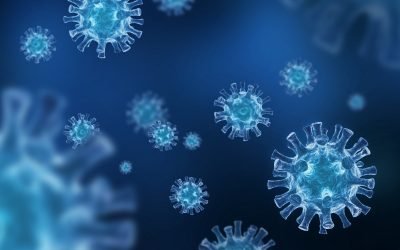Note: This is the latest installment in a series of article that I have written about the 12 cell salts. For a complete introductory discussion of these invaluable nutritional medicines, you may wish to read two of my earlier articles:
The 12 Cell Salts: Invaluable Health Builders
Kali. Phos. (Potassium Phosphate) – Cell Salt Remedy for 21st Century American Nervousness
In this article, I discuss magnesium and the magnesium cell salt– Mag. phos. (Magnesium phosphate). Mag. phos. is one of the leading cell salts for those struggling to move forward despite the formidable headwinds of high-stress contemporary existence.
Mag. phos. (Magnesium phosphate) is the leading cell salt for three of the most common symptoms experienced by stressed-out, sensitive 21st century individuals: muscle tension (most notably of the neck, shoulders, back and temporomandibular joint or TMJ); spasmodic pains (manifesting as sharp, constricting, stabbing, twinging and or twisting pains) especially of the stomach, intestines, uterus and back muscles); anxiety. I find that among the 12 cell salts, Mag. phos. (Magnesium phosphate) is one of those that is most often indicated in this era of relentless personal stress and intra-societal conflict. Aside from the fact that the erosive, invasive character of 21st century existence is conducive to the quality of symptoms noted above, another primary reason for their very common incidence is the status of magnesium nutrition in westernized countries.
In the U.S., the average intake of magnesium has fallen over 50% in the last century. U.S. government surveys found that the typical American diet provides less than half of the recommended daily amount of magnesium. Some authorities estimate that 80% of the population is magnesium-deficient.
The refining of grains may result in the loss of more than 75% of original magnesium-content. Additionally, the rise in popularity of processed foods (processing strips much of the mineral content from foods) and the depletion of magnesium-rich soil by chemical fertilizers are also major contributors in the decline of bio-available magnesium in the modern diet. This dietary shortfall is exacerbated by the tendency to load up on supplemental calcium while ignoring magnesium as a bulwark against osteoporosis. Importantly in this reference, a build-up of calcium in the body causes magnesium to be flushed out of the cells.
Magnesium-deficiency is common in long-standing or under-controlled diabetics (diabetics tend to have lower than normal magnesium levels and magnesium supplementation may improve glucose tolerance). Could the rapidly increasing incidence in children of what was once referred to as adult-onset diabetes be related in part to magnesium deficiency? Importantly, magnesium has been used for decades to treat alcoholics during withdrawal. Alcohol is a simple carbohydrate and alcoholics are particularly prone to hypoglycemia.
Magnesium excretion is increased by the use of refined sugar, alcohol, caffeine and various prescription drugs, including birth-control pills and diuretics. The antibiotics: Gentamicin, Amphotericin, and Cyclosporin; diuretics, such as Lasix, Bumex, Edecrin, and Hydrochlorothiazide; and the chemotherapy drug Cisplatin all tend to increase loss of magnesium via the urine.
Additionally, a great deal of magnesium is lost as a result of excessive vomiting (e.g., as occurs with bulimia, morning sickness and chemotherapy) and chronic diarrhea (as occurs in many cases of irritable bowel syndrome (IBS) — magnesium deficiency is commonly a contributor to the development of IBS).
Magnesium’s Many Roles in the Body
Magnesium is in its highest concentrations in tissue with high metabolic activity, such as the brain, heart, kidneys and liver. Other than potassium, magnesium is the most abundant cation (positively charged ion) in soft tissue, and its deficiency leads to tissue breakdown and destruction.
Magnesium is involved in the functioning of more than 300 essential enzyme reactions in the body and it’s absolutely critical to the normal functioning of every organ system. For instance, as regards the cardiovascular system, low magnesium levels may result in coronary arterial spasm and sudden-death heart disease. The magnesium-content of heart muscle has been shown to be low in those who die of “sudden-death.” Magnesium, an effective vasodilator, has an anti-arrhythmic effect on the heart muscle and limits platelet aggregation(i.e., clumping together of clotting cells in the blood).
This mineral is crucial to the maintenance of emotional, as well as physical, well-being. Magnesium, a natural tranquilizer that ameliorates erratic nervous system activity, also combats stress through reduction of muscular tension via relaxation of skeletal muscles. Magnesium deficiency may contribute to depression (including post-partum depression), irritability, agitation, anxiety and panic attacks.
Magnesium is crucial for relieving chronic fatigue, especially if it occurs in conjunction with depression, anxiety and sleep difficulties. Magnesium shortfall may be a contributory factor to the dramatic increase in recent decades in the incidence of hyperactivity in children. Accordingly, studies have indicated that supplementation with magnesium may decrease hyperactive behavior.
Some of magnesium’s other essential roles include:
- Activates pathways involved in protein and carbohydrate metabolism and is involved in the function and maintenance of DNA.
- Helps to regulate the electrical reactivity of cell membranes, and thus, the flow of vital nutrients and waste products across those membranes.
- Involved in the synthesis of lipids and proteins.
- Plays an important role in muscle relaxation and neuromuscular transmission.
- Preventstooth decayby binding the calcium in tooth enamel.
- Aids detoxification by assisting in the removal of excess ammonia (by-product of protein digestion) from the body.
- – Helps to prevent spasms of the gastrointestinal tract, arteries (including the coronary arteries), fallopian tubes (a cause of infertility), and bronchial spasm (as occurs in asthma).
- Can help reduce the build-up of unwanted calcium deposits in arteries and heart valves.
- – Exerts an anticancer effect. Magnesium-deficiency has been shown to increase cancer susceptibility. Ironically, chemotherapy depletes magnesium stores and, in so doing, may actually stimulate the development of malignancies.
- Helps to lower blood pressure in pregnant women with pre-eclampsia and is also an anticonvulsant in eclampsia (i.e., toxemia of pregnancy).
- Deficiency may be indicated by abnormal menstrual symptoms, including:
- cramping; fatigue; depression; water retention; irritability.
- Chemical sensitivities cannot be resolved until magnesium-deficiency is rectified.
Common Magnesium-Deficiency Symptoms:
apprehensiveness; personality changes; confusion; anxiety; alcoholism; disorientation; psychosomatic illnesses; insomnia; hypothyroidism; adrenal gland fatigue and weakness; lack of coordination; obesity; fluid retention; proneness to motion sickness; muscle-twitch; tremors; weakness; bizarre muscle movements of the face and eye muscles; hair loss; swollen gums; tension in the neck and shoulders; weakness of the heart muscle; angina pectoris; proneness to blood clots in the arteries; white blood cell disorders; chronic sore throat; hay fever; asthma; gastrointestinal disorders; nausea; constipation; colitis; intestinal parasites; liver weakness; gallbladder disorders, including gallstones; bladder control problems; PMS; amenorrhea (absence of menstrual period); tetany; muscle cramps; skin lesions; warts.
Note: I have been a formulator of nutritional and herbal supplements for more than 35 years. When I am asked “Where do I begin if I want to take supplements?” I almost invariably respond – “Begin with magnesium.”
I came to realize the crucial importance of magnesium supplementation many years ago and so developed two highly sophisticated magnesium supplements which have now been on the market for over 30 years.
One of the crucial keys for successful magnesium supplementation is the absorbability of the magnesium from the gut into the blood. To maximize magnesium absorption I developed two magnesium formulas that utilize multiple amino acid transporters that greatly enhance the absorbability of the magnesium component. These two magnesium formulas – Premium LifeMag and Premium Mag Plus (multiple amino acid transporters plus magnesium rich herbs) are available only in the U.S. and can be purchased only from askhealthway.com
The Cell Salt Mag. phos. (Magnesium phosphate)
Mag. phos is the leading cell salt for spasms, seizures, convulsions and various other nervous phenomena related to the white matter of the central nervous system. The white matter within the nervous system constitutes the conducting portion of the brain and spinal cord. It is composed primarily of myelinated nerve fibers (those having myelin sheaths). Tissue composed of unmyelinated fibers is called gray matter.
The white matter conducts nerve signals related to both internal and external, sensory, motor and reflex stimuli. Mag. phos. symptoms often arise when the conductibility and excitability of these fibers is disturbed leading to the propagation of abnormal sensations and resultant abnormal muscle contractions.
In general, when there is a deficiency or functional disturbance of magnesium, muscle fibers tend to contract. Mag. phos. should be considered for any disorder that originates within nerve cells and extends to neuromuscular junctions (the junctions of a motor nerve fiber and a skeletal muscle fiber).
The characteristic pains which indicate the relevance of Mag. phos. are spasmodic, shooting, stabbing, boring or lightning-like accompanied by a constrictive sensation. These pains are sometimes wandering in nature (continuous shifting in locality) and are relieved by warmth and pressure.
Mag. phos. is the antispasmodic cell salt and is useful in all spasmodic presentations (e.g., menstrual cramps, spasmodic retention of urine, IBS and epilepsy).
Muscle Spasms
A spasm is a painful, involuntary, and sustained contraction of muscle, such as the skeletal muscles of the limbs or the smooth muscles of internal organs such as the stomach, intestines and bladder. Common internal spasmodic symptoms include: stomach cramps, irritable bowel, menstrual cramps and blood vessel spasm (vasospasm).
Leg and stomach cramps caused by overexertion in cold water (swimmer’s cramps) are accompanied by severe pain and temporary paralysis that may lead to drowning. Mag. phos. symptoms are better for warmth and worse for cold. Severe cramp in the calf of a leg during sleep may be due to overstretching or strain of the affected muscle on the previous day, unconscious tensing of the muscle during sleep, or, (especially in older individuals), poor blood circulation (i.e., deficient warmth).
Menstrual cramps involve contractions of the uterine muscle and may occur before or during menstruation. These are most commonly experienced by younger women who have not had a full term pregnancy. Heat cramps in the muscles of the extremities or abdomen results from mineral loss due to protracted profuse perspiration.
Occupational cramps are spasms affecting specific muscles that are overused during the course of one’s daily occupation. Cramps are also a central feature of Parkinson’s disease and Huntington’s chorea. Tetany is a severe form of cramping that begins in muscles of the extremities.
A coronary artery spasm, a temporary constriction of the muscles in the wall of one of the arteries that delivers blood to the heart, can decrease, or completely block, blood flow to the part of the heart supplied by that blood vessel.
A persistent coronary artery spasm may result in chest pain (angina) and even a heart attack (myocardial infarction). Unlike typical angina, which usually occurs in relation to physical activity, some coronary artery spasms often occur at rest, typically between midnight and early morning. Many of those who experience coronary artery spasms don’t have common risk factors for heart disease, such as high cholesterol and high blood pressure. However, they’re often smokers. Coronary artery spasms may be triggered by exposure to cold, intense emotional stress and stimulant drugs such as amphetamines.
Stress and anxiety are a common cause of muscle spasms and twitching as stress encourages ongoing muscle tension, a strain on the muscle fibers that can cause them to spasm. Anxiety leads to extra electrical impulses in the brain, which transmits these via the nerves to the muscles.
Excessive intake of caffeine is also a common cause of spasmodic muscle conditions. The side effects of caffeine include muscle spasms, twitching (including eye twitching), nervousness, headaches, abnormal heartbeat, restlessness, and frequent urination.
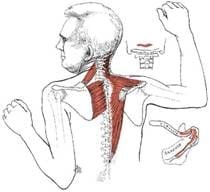
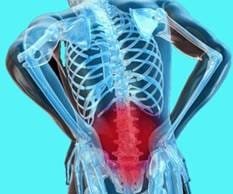
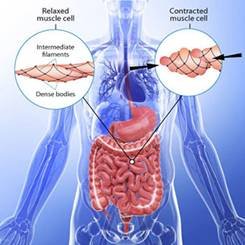
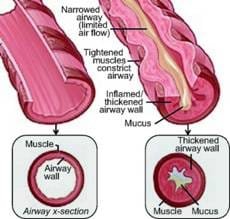
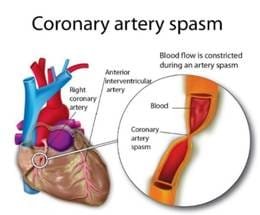

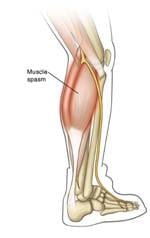
Magnesium, Calcium and Spasm
Low potassium (hypokalemia), low sodium (hyponatremia), low magnesium (hypomagnesemia) and/or low calcium level (hypocalcemia) levels are all potential causes of muscle spasms. Calcium and magnesium are important for muscle contraction and relaxation, and a deficiency in magnesium or an excess of calcium in proportion to magnesium can cause muscle spasms.
Magnesium is important for the electrical stability of human and animal cells, the support of cell membrane integrity, muscle contraction, nerve conduction, and the maintenance of vascular tone.
Magnesium is intimately interlocked biologically with calcium. These two minerals cooperate in the production of adenosine triphosphate, or ATP (the energy currency of life; the high-energy molecule produced via metabolism that stores the energy the body needs for all its physiological functions). Conversely, in many metabolic processes, such as the synthesis of nucleic acids and protein, calcium and magnesium are antagonistic in nature. Magnesium is necessary for these processes, while calcium can inhibit them. Magnesium has been called by many the nature’s physiological calcium channel blocker since it regulates the intracellular flow of calcium ions.
Magnesium causes muscles to relax …while calcium causes them to contract. A proper balance of calcium and magnesium maintains normal cardiac muscle function. An excess of calcium can cause excessive cardiac muscle contraction sometimes resulting in a heart attack.
Magnesium relaxes smooth muscles of the gastrointestinal tract, respiratory tract, reproductive tract and blood vessels, accounting for its role in preventing gastrointestinal and vascular spasm, spasm of the fallopian tubes (causing infertility) and bronchial spasm (as in asthma). Accordingly, one way that magnesium helps to prevent heart attacks is by protecting against spasm of the coronary arteries. Vascular spasm drastically diminishes the delivery of oxygen to affected tissues (i.e., ischemia), causing pain, injury and tissue-death.
Over time, low magnesium levels may produce progressive vasoconstriction, resulting in coronary arterial spasm and sudden-death ischemic heart disease. The magnesium-content of heart, muscle has been shown to be low in those who die of sudden-death. Patients with acute myocardial infarction are magnesium-deficient and develop low blood-levels of magnesium during the acute phase of the infarction. Magnesium- deficiency may result in the failure to inhibit entry of calcium into myocardial cells which, when not curtailed, leads to spasm and the shutting-off of blood supply to affected areas of the heart.
Mag. phos and Anxiety
Essentially, anxiety is a persistent, exaggerated state of worry and tension that is often experienced as a foreboding of some imminent, but usually ill-defined, misfortune. Most of the time, the worry is illogically out of proportion to the situation that inspires it.
The difference between fear and anxiety is that while the former is an effect elicited by a specific causative factor, the latter, while sometimes aroused by a broad spectrum of activities and events, frequently manifests when there is little or nothing to evoke it.
One of the hallmarks of anxiety is that the individual has a great deal of difficulty controlling the propensity to worry and tension. They can’t shake off their concerns and so these can build to a distressing fever pitch. Hence, there is an ongoing struggle to regain control of oneself, to be able to relax, and to establish an effective coping mechanism.
While anxiety is often associated with a specific mental disorder such as clinical depression, it commonly presents independent of any other emotional irregularity. Some of the symptoms associated with anxiety include: feels wound-up and tense; restlessness – always on edge; psychological and physical arousal; negative thoughts and feelings; depression; easily becomes fatigued and worn-out; difficulty concentrating; inward focus of attention; irritability; anger alternating with fear; sleep difficulties (difficulty falling or staying asleep; restless, unsatisfying sleep) tense, unpleasant dreams; trembling; twitching; headache; difficulty swallowing; heart palpitations or rapid heart rate; shortness of breath; stomach and/or intestinal distress; digestive weakness; hiatus hernia; muscle tension and muscle pain; sweating; hot flashes.
Other symptoms which may be either contributory to, or a product of, generalized anxiety include: panic disorders; agoraphobia; environmental sensitivities which border on phobias; phobias about being in public with other people; post-traumatic stress disorder; obsessive-compulsive behavior.
In the classical cell salt literature, much of which was developed in the late 19th and early 20th centuries, Mag. phos., while noted in relation to “mental disorders” in general, is not described in relation to anxiety in particular. However, in the leading reference guides of that era the term anxiety is not used.
Secondly to the extent that anxiety is alluded to in the late 19th century and early 20th century literature, using synonyms such as oversensitivity, hypochondriasis, timidity and restlessness, it is generally associated with another nerve cell salt – Kali. phos. (Potassium phosphate). George W. Carey, M.D. in The Biochemic System of Medicine (first published in 1894) notes: “Mag. phos. is closely allied with Kali. phos. as the latter acts upon the gray nerve fibers, while the former acts upon the white; these being so closely connected, it is evident that a molecular disturbance in one of them will be apt to cause a disturbance in the other. Therefore, the characteristic indication of the two cell salts may, in some cases, be somewhat similar.”
Leading qualities and symptoms of the Mag phos. cell salt remedy include:
one of the leading nutritional elements for nerve tissue; the antispasmodic cell salt; important to the muscle tissues, ensuring rhythmic and coherent contraction and relaxation; symptoms better for the application of heat and firm pressure; specific for highly sensitive, nervous individuals who tire easily or tend toward chronic fatigue; illusions of the senses; anxiety; tearfulness; insomnia from excessive fatigue and/or lack of adequate brain nutrition; nerve pains, including neuralgia and neuritis; darting, shooting pains; epilepsy; paroxysmal, intermittent, shifting headaches that feature neuralgic or tension-type pain; headaches relieved by warm applications; nervous headaches sometimes accompanied by sparks before the eyes; eyes sensitive to light; sees colors before the eyes; twitching of the eyelids; TMJ; toothache with shooting pains; sensitive teeth; tooth pain better for warm liquids; chronic tension in the neck and shoulders; spasmodic constriction of the throat; asthma; spasmodic cough; angina pectoris; heart palpitations related to nervousness; flatulent colic in infants and children; flatulent distention of the stomach; spasmodic stomach pains; gastro-esophageal reflux; cramping pain in the intestines due to accumulation of flatus; constipation with urging but inability to pass stool; benign prostatic hypertrophy; menstrual cramps preceding or during flow; vaginismus; spasmodic labor pains sometimes accompanied by leg cramps; muscle twitching and spasms; sciatica with severe, spasmodic pain; writer’s cramp; cramps in the calves.
Mag. phos. and Coriander Essential Oil
I have determined that each of the 12 cell salts has the potential for synergistic relationships with a number of essential oils with one of these being most prominent. In this reference, the leading “Mag. phos. oil” is coriander seed oil.

In herbal medicine, coriander is considered to exert the following actions: analgesic, anti-inflammatory, antispasmodic, carminative, diuretic, expectorant, and stomachic (to stimulate the secretion of gastric juices). It is also widely used as an aromatic flavoring to disguise the taste of bitter purgative herbs while counteracting the tendency for said purgatives to cause painful griping.
Disorders for which coriander has long been used by herbalists include: headache; dizziness; tired eyes; digestive complaints related to nervous tension; dyspepsia; vomiting; flatulence; diarrhea; gastrointestinal spasms; colic; hypochlorhydria (low stomach acid production); constipation; ulcerative colitis; cough; chest pains; bladder complaints; painful urination; excessive menstrual flow; post-partum complications; rheumatoid arthritis; rheumatism; rheumatic pains.
In aromatherapy, coriander oil is considered to be potentially useful in certain cases of: nervous depression; worry; shock; fear; anxious over-thinking; depression; emotional repression; bitterness, hopelessness, pessimism and stagnation; insecurity; lethargy; insomnia; general debility; mental fatigue; nervous exhaustion and weakness; neuroendocrine fatigue; deficient chi; abdominal distention; dyspepsia; diarrhea; colic; gastrointestinal spasms; spleen weakness; irregular menstruation; muscle spasms; neuralgia; osteoarthritis; rheumatism; edema.
Other essential oils that act synergistically with Mag. phos. include: Angelica; blue chamomile; cardamom; cayenne; ginger; greenheart wood; marjoram; melissa; peppermint; santolina; St. John’s wort; tangerine; turmeric; valerian
Cell Salts, Essential Oil Blends and Acupoints

Large Intestine Meridian
Based on my many years of work with both cell salts and the acupuncture meridians I have determined that each of the 12 cell salts has a corresponding relationship with one of the 12 regular acupuncture meridians. In this reference, Mag. phos. is most prominently associated with the Large Intestine meridian. Accordingly, high dilutions of coriander oil and other essential oils (determined by a very specific analytical process; view brief video in which discusses this process (scroll down to video screen at bottom of page) are applied to specific Large Intestine acupoints as well as other acupoints.
Some of these points include: Large Intestine 4; Large Intestine 11; Lung 7 and Stomach 36.
The essential oil blends are applied to these points (as well as to specific chakras and skin-reflex areas) in conjunction with the administration of Mag. phos. The complete details of the method of formulating these blends, preparing their high dilutions (1 part essential oils :1000 parts carrier oil dilution) and then applying them to selected acupoints, chakras and skin reflex areas are beyond the scope of this article. Get the Berkowsky’s Synthesis Materia Medica of the Twelve Cell Salts for this information.
Mag. phos. is an invaluable nutritional medicine. This cell salt may provide relief from stomach and intestinal cramps, menstrual cramps, leg cramps, etc. as well as generalized muscle tension and chronic anxiety. Like all cell salts, it is inexpensive and generally well-tolerated by most people. When using Mag. phos. or any other cell salt, taking a sip of room temperature, or warm, water after the sublingual tablets dissolve seems to aid that cell salt’s action.
Disclaimer: This article is intended as an educational tool, and not as a prescription. Seek the advice of your health-care provider before discontinuing any medication and/or trying any new remedy or technique.



